#Sierra Club California
Text

Ansel Adams and friends warm up by the fire somewhere in the Sierra Nevada Mountains
California
1931
#vintage camping#campfire light#ansel adams#history#sierra club#california#hiking#sierra nevada mountains#outdoors#travel
151 notes
·
View notes
Text

“The ‘hard-working’ commissary department. Brains and Henry tear off a few snores.” This photo is part of a souvenir set of images of the 1926 outing of the Sierra Club to Yellowstone National Park and the Grand Teton. Photo from our online catalog.
Beginning in 1901, the Sierra Club held an annual outing, eventually known as the High Trip. Up until 1930, outings were led by William Colby. In 1926, some 200 hikers trailed by pack animals and cooks hiked into Yellowstone National Park. Hikers broke into small groups, exploring various different trails – this album follows one small group. This small group also climbed the Grand Tetons once out of Yellowstone, before heading home.

“Tap gets attention from the tonsorial department. Miggie clips 'em while Bobby A files 'em off:” A tonsorial department is focused on grooming (i.e. hair, nails, shaving). This is another image in the set from the 1926 outing of the Sierra Club, from our online catalog.
#sierra club#yellowstone#grand teton#national parks#hiking#camping#california history#history#california
13 notes
·
View notes
Text




Before heading home from backpacking, we stopped at Mammoth Lakes for an overnight stay at the ski resort to shower, sleep in a real bed, enjoy some beer and food at Distant Brewing. We also had a great breakfast at The Stove.
2 notes
·
View notes
Video
Postcrossing US-8651004 by Gail Anderson
Via Flickr:
Postcard with a photo of the Merced River below the Vernal Fall in Yosemite National Park in California. This is from the Sierra Club Yosemite Postcard Collection, and the photo was taken in 1985. Sent to a Postcrossing member in Germany.
#Waterfalls#Park#Yosemite#California#River#Vernal Fall#United States#Merced River#National Park#Nature#Outdoors#1985#Trees#Rocks#Sierra Club#Postcard#POstcrossing#flickr
0 notes
Text

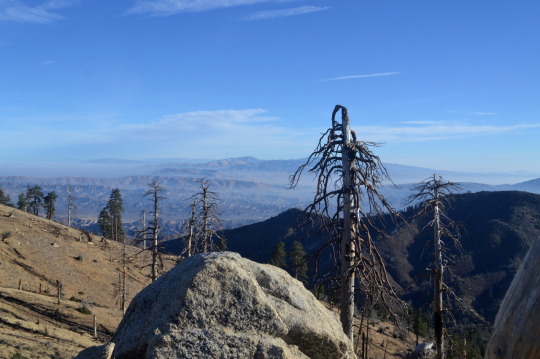




Los Padres National Forest, California.
One last hike in a big peak bagging weekend with the Hundred Peaks Section. The last of the peaks to clean out everything around Alamo Mountain. It was only a little less long than the day before, but we all did it! From November 2016.
#day hike#travel#landscape#nature#hiking#hike#outside#mountains#Los Padres National Forest#Los Padres NF#California#Ventura County#HPS#Hundred Peaks Section#peakbagger#peak bagging#Sierra Club#free outings#open to the public#get out there#peak#chaparral
0 notes
Text


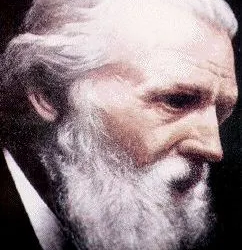
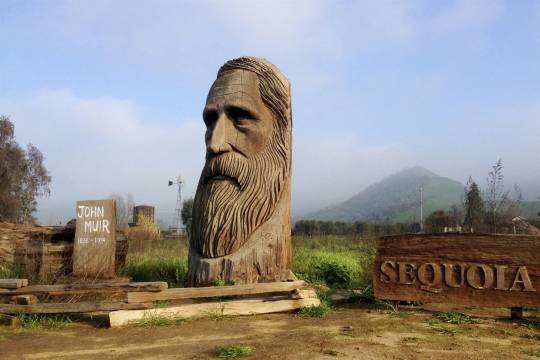

On April 21st 1838, the naturalist John Muir was born.
Born in Dunbar, East Lothian, his parents were Daniel Muir and Ann Gilrye. He was the third of eight children: Margaret, Sarah, David, Daniel, Ann and Mary (twins), and the American-born Joanna. His earliest recollections were of taking short walks with his grandfather when he was three.
In his autobiography, he described his boyhood pursuits, which included fighting, either by re-enacting romantic battles from the Wars of Scottish Independence or just scrapping on the playground, and hunting for birds' nests As a child, he was raised under a strictly religious upbringing.
John Muir was a naturalist, conservationist, explorer, and writer. At age 11, his family immigrated to the United States from Scotland and settled in Wisconsin. Muir learned to love the wilderness at an early age and even carved working locks out of wood. At age 21, he entered the University of Wisconsin, but left after three years. After suffering an eye injury while working in Indiana, Muir resolved to work in the wilderness.
In 1868, after roaming the North American continent, he landed in San Francisco. Muir explored California and was awestruck by its natural beauty. He soon became a successful writer, describing the landscapes and detailing the devastation of alpine meadows and forests by grazing sheep and cattle.
As a result of his efforts, Congress established Yosemite National Park in 1890. Muir was also involved in the creations of Sequoia, Mount Rainier and Petrified Forest National Parks. To protect the parks from poachers and land prospectors, Muir, and his supporters, formed the Sierra Club in 1892. He served as its president until his death in 1914.
Find out more about John Muir on a web site dedicated to hime, including a 20 minute documentary. https://johnmuir.org/
20 notes
·
View notes
Note
You're surprised that "environmental conservation and sustainability are based on 'vague vibes'"?
Have you not noticed anything about nuclear power for the last fifty years? Or the San Francisco Sierra Club claiming that dense construction is anti-environmental and unsustainable, flatly contradicting not just all the research on the subject but even the strong statements of the California-wide leadership of the Sierra Club? Or bans on plastic straws and bags, both of which are better for the environment than the replacements?
Environmentalism is, and always has been, entirely based on vague vibes with minimal concessions to consequences of any kind.
No, I haven't noticed those things, because what I know of """sustainability"""" is a bunch of real, well-educated, practically-knowledgeable fucking people working their asses off to educate and innovate and build an inhabitable future for the planet. Whatever the fuck this one specific group of people in California are doing, in ol' Kentucky we're just too fucking busy trying to do things like unpoison the water and undevastate the land and unfuck the forests and make sure everybody's gonna have food to eat in the future, in between dealing with illegal radioactive waste dumping, fracking waste pollution, and some of the most severe natural disasters of their kind in centuries.
Remember that tornado last year that was on the ground for longer than any other tornado in recorded history EVER? Remember how tornadoes killed more than 80 people in Kentucky, in a day and age where we have radar to track tornadoes in real time and broadcast the information to a device everyone has in their hand? No? That's fucking climate change bitch. Most of us are staring down the throat of the monster already. Grow up.
276 notes
·
View notes
Photo

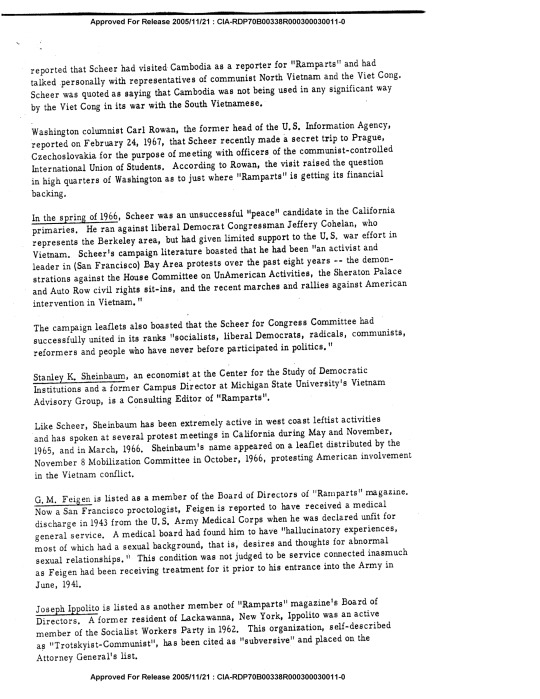
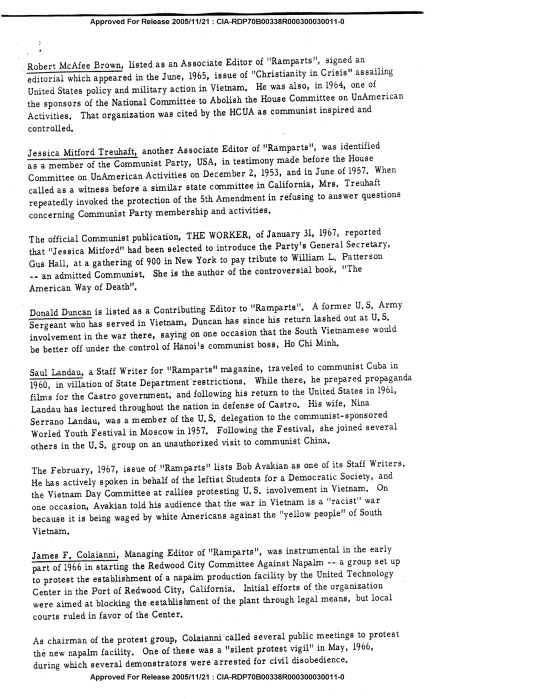

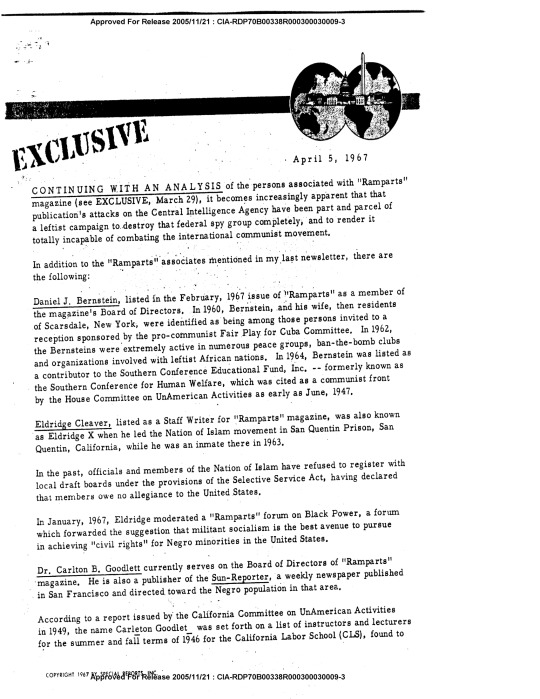

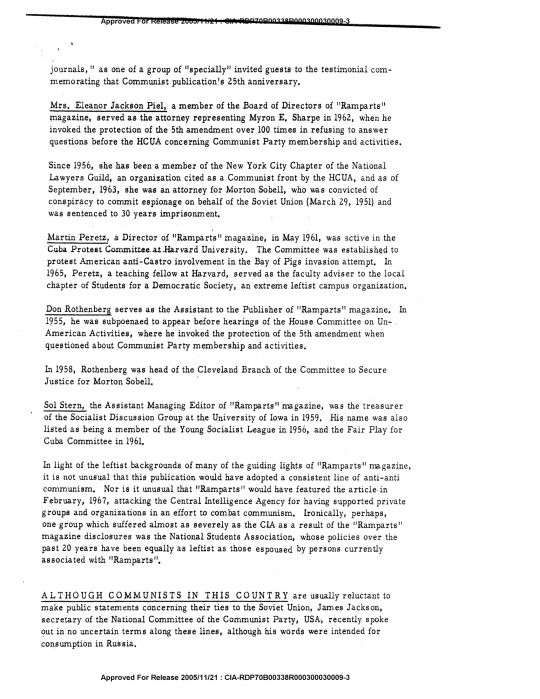

This series is shaping up to be about covert attempts by institutional power structures to undermine the health and safety of the international working class. The previous part, Part 4, is here. You can find a cool easter egg by seeing who the magazine in the bottom right image was delivered to.
The above is a dossier compiled by a right wing business intelligence group and purchased by the CIA not long after the events I’m about to share occurred. It is hosted on the CIA’s website for declassified files, the Reading Room. It was prepared by Fulton Lewis III, an outspoken supporter of the Rhodesian government and the son of a Hearst-sponsored anti-communist radio broadcaster, sort of the Tucker Carlson of the 40s and 50s. We don’t have the CIA’s own assessments because those are still classified.
When we last left the crew of the spaceship Ramparts, they were dealing with infiltration, incompetence, hedonism, an inability to secure funding, and the heady addiction of fame. Things were about to get worse as their own interpersonal disputes had come to the fore. Keating had seen his power at the magazine get whittled away as incentives in the form of shares for other backers became necessary. At the time, Hinckle counted among his friends Howard Gossage, an advertising whiz kid who helped popularize Marshall McLuhan and did the Sierra Club's first campaign. He frequently went to Gossage for advice. The two came up with a plan to push Keating into the 1966 Democratic primaries for the 11th district of California (later held by Leo Ryan, a CIA critic killed at Jonestown, and now held by Nancy Pelosi) as a way of reducing his influence on the day to day operations of Ramparts. In the midst of a meeting, they had two staff members slip away and come back with signs that said "Keating for Congress" and "Keating the people's choice".
By the start of 1966, however, the election bug had spread through the offices, both because it allowed Ramparts to make the news it reported on as salacious as possible, and because the Democratic Party had largely denied ballot access to anybody who was anti-Vietnam War. Bob Scheer, the foreign editor, ran in Oakland, and Stanley Sheinbaum, the Michigan State University professor who'd exposed the CIA's role on campus, ran in Santa Barbara. All gained 40-45% of the vote, mainly by cohering those opposed to the war. One thing in particular all three did was bring together the black vote (for instance, Julian Bond, mentioned previously in the series, campaigned for Scheer). Their campaigns were run by a coterie of Ramparts staffers, namely CPUSA member Carl Bloice as well as Berekeley lecturer Peter Collier, and were endorsed by a combination of black and Hollywood luminaries, for instance Dick Gregory, the civil rights activist and stand-up comedian, and Robert Vaughan, Napoleon Solo on the Man from Uncle and both a murderer and a victim on Columbo (see him argue about Vietnam on Firing Line with William Buckley here). Some of the opposition research on the three came directly from CIA files and was given to the establishment candidates by LBJ's press secretary Bill Moyers.
youtube
With the elections lost, Ramparts needed a new spin on things to bring back all the anti-electoral politics radicals. Fortunately, in nearby Oakland, a new group had just been founded called the Black Panther Party. Huey Newton and Bobby Seale like to portray their group as their own innovation, two upwardly mobile college kids shooting the shit late at night. The group they'd been part of prior to the BPP, the Maoist Revolutionary Action Movement, described them as "adventurists" for their desire to put theory to practice and finally organize in the community instead of just talking about it. Whatever the case, Newton learned from Robert Williams' Negroes with Guns that California law, influenced by white supremacist vigilanteism, allowed anyone to openly carry a weapon even in the presence of police. He went to Chinatown, bought copies of Mao's Little Red Book for cents, and sold them for dollars in Oakland as part of a course in organized self-defence, then used the money to buy shotguns and M-16s for use by graduates of the course. By February 1967, Ramparts staff writer Eldridge Cleaver had made contact at a speaking event for Malcolm X's widow Betty Shabazz, where the Black Panther Party founders and their cohort were the only ones armed. Cleaver invited them to the Ramparts offices for a sit down.
Remember the bit from the last part about Shabazz' bodyguards? That was Seale, Newton, and Co. Their arrival caused Hinckle's police buddies to get worried, and they put out an APB and surrounded the building, much to Newton's consternation. Hinckle suggested they go out for a drink, but nobody was buying it. Newton stared down a cop, who undid his holster. Seale put his hand on Newton, who told him off. "Don't hold my hand, brother." Seale released it, because that was his shooting hand. Newton taunted the officer. "You got an itchy trigger finger?... OK, you big, fat, racist pig, draw your gun!" All the Ramparts' staffers who'd come to watch as well as the officers' backup got the hell out of Dodge. Eventually, even the officer backed down. It was the first time the BPP had ever gotten the police to back down. It brought admiration from the entire Ramparts staff, who soon made the magazine the semi-official outlet of the BPP. And it brought Cleaver into their fold. They appointed him spokesman/Minister of Information within weeks. The following is the only news footage from that day shot after the incident, the rest having been lost, with Scheer in the background at one point:
youtube
And that wasn't even the most shocking thing going on at Ramparts. This series has previously mentioned the National Student Association as a bunch of debate nerds who essentially trained to have public speaking and organizing on their resume for future employers. The thing about the NSA was, it was a CIA front, and generally suspected as such. In 1947, there was an implosion of student politics' international facing groups. Those who had seen the Soviets fight in the Second World War generally accepted their claims to want world peace on their face, while the groups aligned with the Catholic Church teamed up with disparate right wing WASPs and Jews to fight back. The CIA had taken these students (to note, these were largely men in their late 20s or early 30s, grad rather than undergrad) under their wing and organized them into a front group that could report back on invitational events held in Eastern Europe. In turn, the top echelons of the NSA had to be sworn into legal secrecy as a prerequisite of participation, with the reward being entry into the old boys network of politicians and bureaucrats which virtually guaranteed a job.
The CIA fucked up. In 1965, the elected president of the NSA was Philip Sherburne. He was sworn into secrecy on the source of funding for their new HQ and general operations, as was normal for the group. But he disliked that they had only one source of funding, and he wanted the NSA to be independent. At the time, the grassroots in the organization who followed international politics and hewed to the left had managed to get some of their membership into power, but they had felt straitjacketed by the CIA's complete control of NSA finances. Many wanted to join in on the anti-war marches. Sherburne and others, spurred on by abrogation of Juan Bosch's regime in the Dominican Republic and the electoral fraud that brought the American-backed opposition to power, worked to find alternative sources of funding. They sent one an NSA man as part of the operation, but he got cold feet and worked with Sherburne to expose it. In response, the CIA had a number of top NSA men declared eligible for the draft in Vietnam. Bureaucratic fights ensued, involving the lives of students in America, Spain, Vietnam, and elsewhere. Finally, Sherburne went above the CIA's head to vice president Hubert Humprhey. In response, the CIA went and cut all of Sherburne's independent lines of funding. Unbenkownst to them, Sherburne had made a relatively radical student named Michael Wood his outside line to donors. He'd told Wood not to approach certain groups because they were backed by "certain government agencies". Wood had surmised that this meant the CIA and gone and picked up the only book out on the Agency: The Invisible Government, by David Wise and Thomas Ross. When he saw that the NSA's funding for 1966 had the same donor groups backed by the CIA, he realized Sherburne had lost and stole the files.
Twice the New York Times had published articles critical of the CIA in some form. In 1965, Texas congressman Wright Patman, initially elected on his support of the Bonus Army and ever a thorn in the establishment's side, had investigated 8 charitable foundations and found them to be CIA cutouts. The NYT had written an article on this as well as replies from the funded orgs (Encounter Magazine and the Congress for Cultural Freedom). In 1966, spurred by Ramparts' articles on MSU, NYT reporter Tom Wicker wrote of the allegations and added details of other botched operations around the world he'd heard from sources over the years. This brought the ire of the agency. In 1961, in response to details of the Bay of Pigs invasion being published in The Nation before it occurred, President Kennedy told his aides to bother him when details showed up in the New York Times because it otherwise did not matter. The CIA had actually worked hard to kill the very same story before the NYT could publish it so by the time the invasion failed, Kennedy apparently exclaimed that he wished more details had been published in the NYT so that the invasion would have been stopped. CIA agent Cord Meyer made the postscript of Part 3 of this series as the handler of much of the CIA's work through cutouts and allied groups like AFL-CIO, especially in in regards to the effort to influence the media known as Operation Mockingbird. Meyer and his wife, Mary Pinchot, were next door neighbours to the Kennedy's before JFK became president. Pinchot divorced Meyer after their child was killed in a car accident in 1957. She moved in with her brother-in-law, Ben Bradlee, later of Pentagon Papers and Watergate fame and played by Tom Hanks in the Steven Spielberg film The Post. In 1961, James Jesus Angleton, head of counterintelligence at the CIA, tapped her phone and discovered she was in a sexual relationship with JFK, including visits at the White House. When Pinchot was murdered in October 1964 in what was termed a robbery (a black man was arrested but acquitted), a friend of the family heard (he said) about the murder on the radio and phoned Bradlee first and Meyer second. Bradlee went to go find her diary and found Angleton sitting in her house (his garage) reading it. They later destroyed it. After that, Meyer became an alcoholic and compiled an enemies list of the CIA that included the Vice President. He was already fearful of a leak and told his subordinates to go after NSA staff but did not determine who Sherburne had told until his wiretaps of Ramparts phone lines informed him.
Ramparts, of course, knew that they had been tapped and kept phone calls brief. Scheer phoned Judith Coburn of the Village Voice and asked for her discretion. Wanting to break into a field dominated by men, Coburn felt like she was being called by a rock star, but nonetheless found it absurd that Scheer believed his calls to be tapped. She knew the CIA to be involved in assassinations like Lumumba's and thought their dealings with a minor org like the NSA were absurd. Ultimately, she helped by confronting a number of figures on their work. Eventually, a young WASP Harvard undergraduate who was on retainer from Ramparts named Michael Ansara got the call. His blog about it is excellent reading, located here. I quote:
One evening in the cold months of early 1967, my phone rang. A strange voice, obviously from New York asked, “Is this Michael Ansara?”
“Yes.”
“This is Sol Stern from Ramparts. Bob Scheer says you are our man in Boston.”
“Well . . . OK.”
“Listen I need you to do some work for us right away. I cannot tell you what it is about. I am calling you from a phone booth. Will you do it?”
“Well, what kind of work and are you willing to pay me for it?”
“It is research into two Boston based foundations. We will pay you $500.” 500 dollars was a lot of money. I had no idea how to research foundations, but I thought, what the hell. I could really use the money.
“Sure. What exactly do you want me to do?”
“I can’t tell you anything more than to find everything you can on the Sidney & Esther Rabb Foundation and Independence Foundation. They are based in Boston. I will call you in several days. You cannot call me. You cannot tell anyone what you are doing. You cannot mention the name Ramparts. Can I count on you?”
“I guess so. Sure. Yes.”
Ansara knew a much older man, an economist and lawyer who had sway in the Democratic Party named George Sommaripa. Sommaripa suggested Ansara go to a guy he knew at the IRS. Ansara did, and was told that under no circumstances could he have access to the files on two CIA cutout foundations. Chastened, Ansara complained to Sommaripa, who'd gotten the IRS clerk his job. A few days later, Ansara went back. The IRS clerk told him he could have any box he wanted, provided he did not go past the 990 form on the cover. He went past for the first two foundations and found that money came from an anonymous donor and in equal amounts went right out to the NSA. Ultimately, he pulled the files for 110 foundations, every single known group that the CIA used. He would look at the incorporation files for the foundations, see a lawyers' name, and look him up. Every time, the lawyer was an OSS operative during WW2, the predecessor org of the CIA. One of the lawyers had founded a firm with Sommaripa, a man named David Bird. Ansara confronted Bird, and Bird did not even stop to hang up on Ansara before phoning a contact at the CIA.
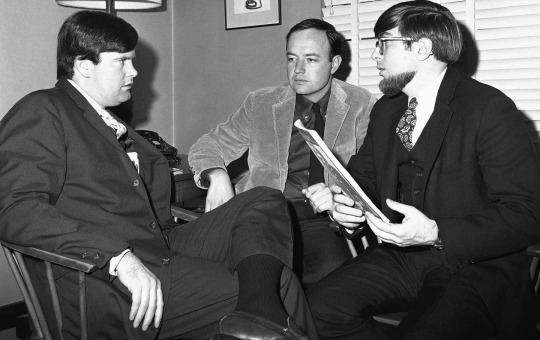
Left to right: Hinckle, Stern, Scheer.
A major corroboration of the story came from three students in New York who were disgusted by American foreign policy in Latin America. One in particular, Fred Goff, had been sent to the Dominican Republic with Allard Lowenstein (part 3) to observe the election of the pro-American candidate over the anti-American one. Goff had discovered that a man that Lowenstein had said he trusted on the country was actually a CIA agent, Sacha Volman. Another, Michael Locker, had done a paper about the CIA based on the NYT articles. Together, they walked in the doors of the AFL-CIO's American Institute for Free Labor Development and asked directly about the CIA, prompting a crashing sound and the institute's director, Thomas Kahn, planner of the 1963 March on Washington and the long-term romantic partner of Bayard Rustin, to scream at them.
The problem was when it came time to do the story. Sometimes, the researchers were paid by Ramparts. Other times, they received cheques from the Interchurch Center, a strange agency that serves as a front for charitable giving from the Episcopal, Lutheran, Presbyterian, Reformed, Methodist, and United Churches in America. James Forman, mentioned in previous parts, once led a picket in favour of reparations from them. Ramparts staff demanded they talk to them by picking up pay phones that would ring at designated times, a dismal failure. Other times, Hinckle, Scheer, and Sol Stern would fly in, book rooms at the Algonquin, and order massive amounts of takeout and booze. 15 to 20 people would be in a hotel room trying to negotiate who would be writing the story by continent, or by year, or by foundation. At one point, Coburn broke into the NSA HQ and unwittingly stole the original deed to their land, where it remained undiscovered in Ramparts' files till the 2010s.
On New Year's Eve, 1966, Lowenstein was hanging out with the new members of the NSA leadership when he informed them that Ramparts was writing about their relationship with the CIA. "The usual sloppy Ramparts piece, lots of flash, little substance," he said. The CIA had known since at least Thanksgiving. A lower level NSA official who'd just been sworn in went to meet with Hinckle and Scheer. The duo, while nonchalantly throwing darts, offered the Ramparts donor list as an incentive to tell all, but he refused. Sherburne attempted to find counsel in a lawyer who'd once opposed the CIA's new Langley HQ on NIMBY grounds. Meyer had threatened the lawyer's brother, working in Bogota with USAID, but the lawyer persisted. Undaunted, Meyer got word to Douglass Cater, the first president of the NSA and now an advisor to LBJ. LBJ bumped it to Lowenstein and the CIA to develop a response, which was to hold a press conference with an article in Henry Luce's (the man, not the monkey) Time Magazine that this was all well known since the 1965 congressional hearings, that the money was not that impressive, that the Soviets had done much more, etc.
This could have killed Ramparts. The IRS was already looking for any sign of foreign influence as an excuse to shut down the magazine. It needed some sort of relationship with the establishment press in a way that would let it gain influence without keeping it from the areas it wanted to report on. At the very same time, both Time and the NYT were reporting on the survival of Ramparts: Keating had attempted a coup and lost a board vote 13-1, with Mitford and other backers providing anonymous quotes that while they disliked the "Animal Farm-ish" nature of the issue, they needed Ramparts to stave off a fascist dictatorship in America. Hinckle followed by setting up an astounding agreement with the New York Times and Washington Post: they would get full access to Ramparts' files on the CIA right now, before the White House could set up a press conference, in exchange for letting them run full page ads for days for their next issue.
The day the Times went to press, February 13, 1963, was termed by former CIA director Richard Helms in his memoirs as "one of my darkest days". The press pushed, smelling blood. President Johnson ordered a suspension and review of CIA funding for outside orgs. The CIA initially tried to find a way to blame a dead president, Truman, but realized that its own documentation on the program, written by Cord Meyer, claimed that then-director Allen Dulles did not have any responsibility to inform the president of what he had ordered. Switching tactics, they turned on their press weapon, known as the Mighty Wurlitzer, and claimed that the CIA would have been remiss to not conduct these operations. "I'm glad the CIA is immoral" was the headline of an article by Meyer's boss, Thomas Braden. He described $250 million a year the CIA believed to be spent by the Soviet Union on cultural subversion, to which a mere handful of dollars from the CIA could not compare. No evidence for the accusations was provided, of course. Finally, Helms pulled in a favour from Robert Kennedy and had him testify to the press that his brother had authorized the funding, carried over from the days of Eisenhower. 12 former NSA presidents (including Lowenstein) came out and said the relationship was above board. All had worked for the CIA at least once after they'd left the NSA, but that was not revealed in their letter.
The strategy was a half-success. All the foundations funded by the CIA fell apart and students around the world became suspicious of CIA infiltration. Much of what Ramparts found was investigated by Congress repeatedly over the next decade, culminating in the reforms that came out of the Church Committee, which Helms claimed in his memoirs was sparked by Ramparts and Watergate. Certainly press readership was high, and many stories were published in the NYT and WaPo confirming and furthering the work done. At the same time, the CIA escaped with only a few new rules on its behaviour. President Johnson was a paranoic and was more concerned about using the CIA as a tool against his domestic enemies. He authorized a much larger role for MHCHAOS in punishing his enemies (remember the cryptonyms? MH was the most illegal, as it meant the USA). Many of those fingered were considered liberals in good standing and were part of the labour movement, particularly AFL-CIO higher-ups. They fell in line with the rhetoric about communist subversion because they knew they'd be the ones punished if things went further.
Interestingly, a few months later, the NSA held a vote on integrating an anti-Vietnam War and anti-draft stance into its platform. Traditionally, the CIA had worked from the shadows to suppress these votes. This time, Allard Lowenstein whipped in favour of the anti- stance and it won. Lowenstein soon became a fixture in the anti-LBJ movement, leading the call to bring Eugene McCarthy and Robert Kennedy into the Democratic presidential primaries. To a large extent, the organizations that were closed to the CIA had been products of decades-old relationships and worked in ways that nobody had bothered to improve. Within the CIA, a tension had always existed between bureaucrats with their own fiefdoms and up and comers with new ways of doing things. To a large extent, this scandal simply pushed the former out and made room for the latter, who would not do things like create financial records with the exact same dollar amounts going in and out, or act so bluntly when it came to manipulating staff. While the CIA may have suffered a little in the short term, it was an act of "creative destruction" that improved how the CIA did business. For Ramparts, on the other hand, things were going to get much worse now that they had drawn the ire of the intelligence community. While the magazine reached its peak distribution of 250,000 copies a month, it still did not bring in enough money to cover its expenses, and it was about to be faced with a much larger funding crisis: the Six Day War.
AFTER ALLEN DULLES RETIRED, the director bragged about the NSA operation. “We got everything we wanted. I think what we did was worth every penny. If we turned back the communists and made them milder and easier to live with, it was because we stopped them in certain areas, and the student area was one of them.”... Edward Garvey, who also worked at CIA headquarters, puts it more dramatically: “My God, did we finger people for the Shah?”... Stephen Robbins, despite his limited CIA involvement during his year as president, echoes Garvey’s concern: “It’s South Africa that keeps me up at night.”
#i am finding that i am including way too much information yet the details haunt me enough to make me put it in#i guess ramparts gets yet another part
26 notes
·
View notes
Text
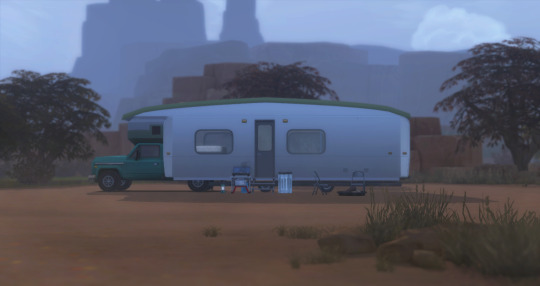
Gameplay notes on a broken, stinky camper:
They haven’t set off on their adventure quite yet, by the way. There’s a bit more story to go still. But this is a glimpse into their future to show off the camper, since I need an entire empty lot to park this thing on, and the camper shown in the previous story scenes is just deco.
Here is the camper build that they’ll actually live in. It’s a decent sized class-C motorhome. As Jordan said, it’s not really one of those cute little renovated #vanlife campers that Ingrid has her heart set on. (Like this one <- I am a total geek over this woman’s van life channel, lol!)
But maybe Ingrid will get hers someday.
This camper is old and run down, definitely in need of some renovation. Jordan is a handy guy, so I have no doubt he’ll keep it running. But creative or stylish, he is not. So he’s probably quite happy to make it smell better and just leave it be.
It’s off-grid, and doesn’t currently have any power or water capabilities, but he is welcome to upgrade those systems when he’s ready.
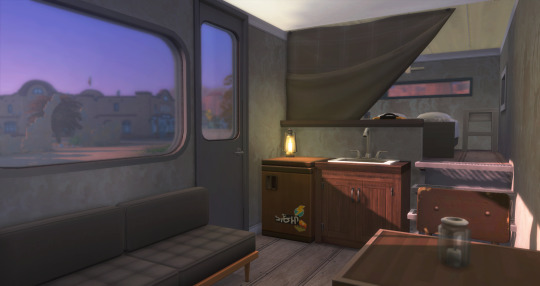
It’s off-grid, and a micro home on 32 squares. (33, actually, being 3x11, and I cheated out a block from the bathroom so it could remain in the smallest tier. 😉 )
I haven’t played with either of these lot types in gameplay before, and I’m super excited to try them! I’m also looking forward to the gameplay of bringing this camper to different locations and playing in some towns that I don’t normally play. But it’s a bummer that, more often than not, I’ll have to bulldoze an entire building to place it somewhere.
(OMG give us world editing tools!!!)
The lot challenges are filthy, gremlins, and creepy-crawlies. And because it was said to be very stinky in the story, I placed a few of these apartment problem stink clouds around to pop up and give them a bad surprise from time to time.
The whole camper, not counting the lot value of wherever it’s placed, is around $7000. Neither of them paid that much for it, or even have that much money to their names. I keep my sims broke, lol! But I do have a kind of personal gameplay rule that my sims can get a bonus “kaching” for each apartment problem or lot challenge they add, to help out with the purchase price. Because in game, lot challenges don’t make the lot any cheaper, even though they kind of should, in my opinion.
Then they would have to pay $1000 in “repairs” to get rid of the lot challenge or apartment problem, if they ever decide to.
(Sadly, I suspect my apartment problems are about to totally break with the new For Rent pack we’re getting, and I’m not sure I have the brain space or ability to fix them this time. Oh well, we had a good run with them, didn’t we? Hopefully someone with more skills and time can pick up the torch.)
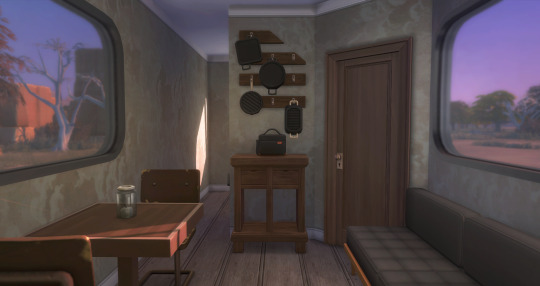

Jordan imagines renovating this back room with a couple of bunk beds for his boys, for the hopeful occasion that Colette lets them come out to visit.
So, they’ll take this thing to a few locations on their way out to California, and then in a couple weeks, Jordan will end up in Sierra Nova to meet up with Maya for the climbing club she hosts through Tyler’s adventure park. The plan is that they’ll train for a season in Sierra Nova, then travel to Komorebi to train further and then attempt to summit, which is another bit of gameplay I haven’t tried before.
I am not going to attempt to wrangle any sort of road trip driving shots with this thing, or the deco object, either. We will use our imaginations!
(Oh, but how cool would a cars/road trip pack be, where we could own a camper and drive it from place to place? But I bet even if they made a pack like that, the campers would be rabbit holes like the tents are.)
7 notes
·
View notes
Text
The sequoia groves and endangered animals found in California’s Giant Sequoia National Monument are imperiled by a pair of logging projects, conservation groups argue in a new lawsuit that asks a federal judge to put a stop to the proposed tree cutting.
The lawsuit—filed Thursday, February 22, by the Sierra Club, Earth Island Institute, and Sequoia ForestKeeper against the US Forest Service—calls the proposed logging “unprecedented” in the national monument. The lawsuit challenges two proposed logging projects that authorize the felling and removal of what’s estimated to be tens of thousands of trees from over 13,000 acres of public forests within large wildfire burn scars. Most of the planned logging would happen in the national monument, and some of it in the neighboring Sequoia National Forest.
...
“We have, basically, a large commercial logging project disguised as a restoration project,” Isherwood said about what the Forest Service is currently planning. “And to be clear, there are some aspects of the project that we support. Prescribed fire to reduce fire risks is something we generally support. Removing brush and small-diameter trees, especially near homes—that’s something we support. But what we have here, in addition to a little bit of good stuff, is a whole lot of bad stuff that involves thousands of acres of logging the monument and removing large trees, old trees, that are in some instances several hundred years old.”
#ecology#enviromentalism#sequoia national park#national park service#us forest service#old growth forest#giant sequoia#Giant sequoia national monument#national monument
5 notes
·
View notes
Text
Like, I'll totally agree that California NIMBYs are ridiculous and have committed the state to a poorly chosen path, but I don't think you guys appreciate how very explicitly central "a civilization where everyone lives in a small-town environment with direct exposure to undeveloped nature" has been to the California Dream
Like before even the postwar Golden Age buildout under Gov. Brown the Elder that really instantiated this suburban paradise, the prewar boom of LA was very commonly framed – embraced by boosters to draw more residents – in terms of a job-rich city that uniquely didn't have "slum" housing.
(You don't even hear about "slum clearance" – the postwar practice of demolishing blocks at a time and giving the former residents intentions of something better that much anymore, but large areas of downtown-adjacent land in American cities was hyper-dense and low quality tenements or often formerly comfortable-class housing that had been subdivided all to hell)
California had an idiom for "life at high residential density" – the crowded, warrenlike Chinatowns of LA and especially SF since the Gold Rush, chaotically full of improvised enterprise, drug addiction, and murderous gang violence!
In the early 1980s, Long Beach – the industrialized working class shore to the south of LA, kind of its Queens, was like "ha-HA, we have filled this wonderful location at low bungalow density, time to upzone so as to keep this a functional area for working-class life!"
Of course the thing is the 1980s in Southern California went on to feature a massive illegal immigration wave (Cheech Marin's 1987 Born in East L.A. is called that because it's about an American-born bilingual Mexican Angelino experiencing this) which often landed in Long Beach AND the crack- and gang- heavy nadir of South LA-area Black communities.
Which is to say, in actual historical precedent that informs cultural sentiment, dense housing in California (let's talk *Oakland*) consistently means "the white average-Joe neighborhood becomes overrun with inscrutable, addiction-riven, gang-murderous Others"
And the whole environmental stuff – there's a clear line from John Muir and the Sierra Club through Paul Erlich and The Population Bomb to the Bay Area types who want to cap tech jobs or the people who worry about water (or road!) use coming from new development that the way to keep properly stewarding the land without exhausting finite resources was to limit population.
You can work racial or wevs angles too, a lot of the West Coast issues with natives and Chinese workers came from the way that the coast's founding culture really came from a "Free Soil" philosophy, common among smallholders and "mechanics" in the (then-"West"), one of the two strains that went into the Republican anti-slavery stance along Boston moralism (New York, as the major port city of an international economy powered by cotton, was fairly pro-Confederate), that this was supposed to be a country to enable white men's ability to establish self-sufficient petty dynasties of their own, and that indulging all this nonwhite work – creating a national economy oriented around slave-produced agricultural exports rather than white artisan industrial development, Pacific landowners recruiting natives or Chinese in a labor shortage rather than letting white wages rise so the workers could establish their pioneer fortunes – were, fundamentally, taking their jerbs.
And the pastoralism! This was the pleasant climate where the ranch house really blew up, integrating the outdoors and living area. Backyards – and home gardens – were key.
(In a LOT of ways Portland as I came to it at the dawn of the 2010s suddenly reminded me of things I had read about midcentury LA far closer than the one I saw in the 2000s)
Pete Seeger in 1963, "little boxes made of ticky tacky", Joni Mitchell in 1970, "paved paradise and put up a parking lot", these were laments for greenfield development coming before the activist-driven 1970s downzonings that saw that greenfield development was the ONLY way for California to add housing.
19 notes
·
View notes
Text

Hikers looking at Little Cahuilla Peak.
California
1975
#vintage camping#campfire light#california#little cahuilla#hiking#camping#exploring#sierra club#outdoors#70s
201 notes
·
View notes
Text
Does art make a difference?
Aw, sure. Of course there are degrees of extremity to the potential change that art can effect, depending on how many people are able to engage with it. The Beatles made a huge difference in the world. But Henry Darger, Jeff McKissack, Karen Dalton, Pauline Oliveros, Kenneth Patchen – there are so many folks who have made great art and not gotten massively famous for it, yet I think there are all sorts of ways their work informs and shapes other people’s work, and brains, and decisions.
Should politics and art mix?
Well, everything mixes, the New Statesman! That’s like asking if a knee-reflex hammer and a quadriceps tendon should “mix”.
Is your work for the many or for the few?
That’s for the many/few to say. I just crank out the hot jams.
If you were world leader, what would be your first law?
Gravity. I feel like we need to tighten up the constitutional protections that particular law enjoys. It’s a ticking time bomb, if you ask me.
Who would be your top advisers?
Cute angel on one shoulder, cute devil on the other.
What, if anything, would you censor?
Maybe we could all agree to not bust each other’s chops all cut-dang day.
If you had to banish one public figure, who would it be?
Don’t know, banishment might be a little extreme, but I’d sure like to take that Stephen Hawking dude down a notch or two. Right? Are you with me?
What are the rules that you live by?
Basically, “bros before hos”. I feel like if you stay true to that, everything else just kind of falls into place.
Do you love your country?
I love William Faulkner, Dolly Parton, fried chicken, Van Dyke Parks, the Grand Canyon, Topanga Canyon, bacon cheeseburgers with horseradish, Georgia O’Keeffe, Grand Ole Opry, Gary Snyder, Gilda Radner, Radio City Music Hall, Big Sur, Ponderosa pines, Southern BBQ, Highway One, Kris Kristofferson, National Arts Club in New York, Ruth Crawford Seeger, Joni Mitchell, Ernest Hemingway, Harriet Tubman, Hearst Castle, Ansel Adams, Kenneth Jay Lane, Yuba River, South Yuba River Citizens League, “Alice Doesn’t Live Here Anymore”, “Hired Hand”, “The Jerk”, “The Sting”, “Butch Cassidy and the Sundance Kid”, clambakes, lobster rolls, s’mores, camping in the Sierra Nevadas, land sailing in the Nevada desert, riding horseback in Canyon de Chelly; Walker Percy, Billie Holiday, Drag City, Chez Panisse/Alice Waters/slow food movement, David Crosby, Ralph Lauren,San Francisco Tape Music Center, Albert Brooks, Utah Phillips, Carol Moseley Braun, Bolinas CA, Ashland OR, Lawrence KS, Austin TX, Bainbridge Island WA, Marilyn Monroe, Mills College, Elizabeth Cotton, Carl Sandburg, the Orange Show in Houston, Toni Morrison, Texas Gladden, California College of Ayurvedic Medicine, Louis Comfort Tiffany, Saturday Night Live, Aaron Copland, Barack Obama, Oscar de la Renta, Alan Lomax, Joyce Carol Oates, Fred Neil, Henry Cowell, Barneys New York, Golden Gate Park, Musee Mechanique, Woody Guthrie, Maxfield Parrish, Malibu, Maui, Napa Valley, Terry Riley, drive-in movies, homemade blackberry ice cream from blackberries picked on my property, Lil Wayne, Walt Whitman, Halston, Lavender Ridge Grenache from Lodi CA, Tony Duquette, Julia Morgan, Lotta Crabtree, Empire Mine, North Columbia Schoolhouse, Disneyland, Nevada County Grandmothers for Peace; Roberta Flack, Randy Newman, Mark Helprin, Larry David, Prince; cooking on Thanksgiving; Shel Siverstein, Lee Hazlewood, Lee Radziwill, Jackie Onassis, E.B. White, William Carlos Williams, Jay Z, Ralph Stanley, Allen Ginsberg, Cesar Chavez, Harvey Milk, RFK, Rosa Parks, Arthur Miller, “The Simpsons”, Julia Child, Henry Miller, Arthur Ashe, Anne Bancroft, The Farm Midwifery Center in TN, Martha Graham, Alvin Ailey, Jr., Eleanor Roosevelt, Clark Gable, Harry Nilsson, Woodstock, and some other stuff. Buuuut, the ol’ U S of A can pull some pretty dick moves. I’m hoping it’ll all come out in the wash...
Are we all doomed?
If we keep our expectations pretty low I think we might be fine. I mean, we’re definitely all dying at some point. There’s no getting around that. But between now and then, things might start looking up!
— Joanna Newsom for The New Statesman, 2008
#joanna newsom#isn't she simultaneously just the most hilarious and thoughtful person?#i love her so much#a few people have asked me for that one quote about loving her country but the whole interview is a real gem i hope y'all enjoy it#love joanna#jnew
18 notes
·
View notes
Text
Day 6 Backpacking with Sierra Club Royce Lake to Pine Creek Trailhead. A long hike (9.5 miles) and 4300 ft of elevation change to finish our last day.
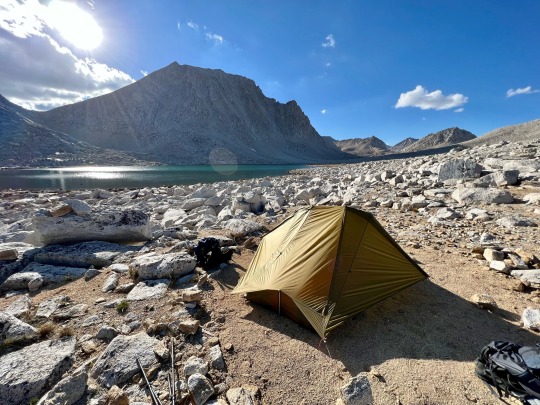
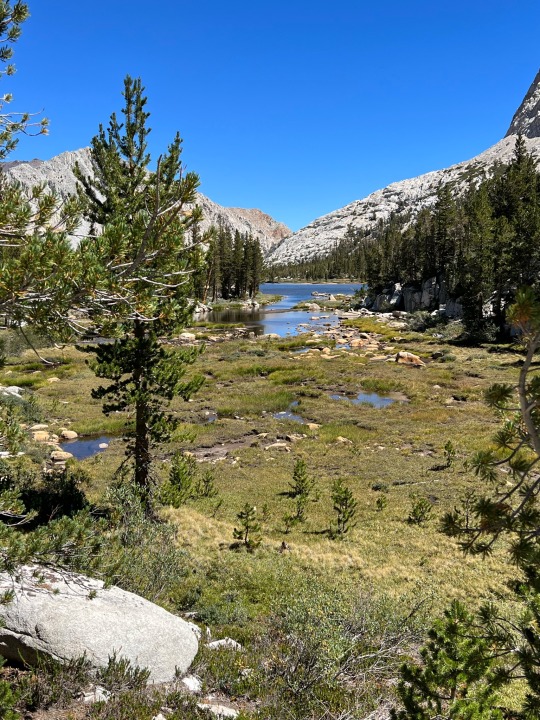





1 note
·
View note
Photo

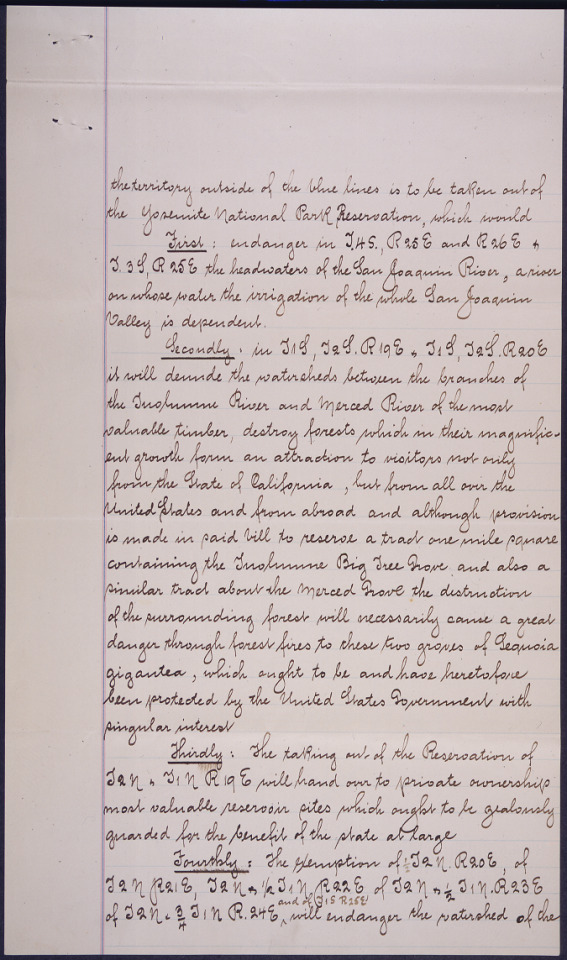


Petition and map from John Muir and other founders of Sierra Club protesting a bill to reduce the size of Yosemite National Park, 1/2/1893.
Record Group 233: Records of the U.S. House of Representatives
Series: Petitions and Memorials
Transcription:
To the Chairman of the Committee on Agriculture House of Representatives Washington, D.C. Dear Sir, Whereas at a meeting of the Sierra Club of Saturday, November 5th 1892, said club being a corporation formed for the purposes, to with: "To explore, enjoy and render accessible the mountain regions of the Pacific Coast; to publish authentic information concerning them; to enlist the support and co-operations of the people and the government in preserving the forests and other natural features of the Sierra Nevada Mountains" a resolution was introduced and unanimously adopted directing the Board of Directors to prepare a memorial to Congress against Bill H. R 5764 introduced by Mr. Carminetti and to use every effort to defeat it, Therefore The Board of Directors of the Sierra Club in accordance with the above resolutions do respectfully and emphatically protest against the diminution of the Yosemite National Park situated in California as contemplated in Bill H. R. 5764 introduced by Mr. Carminetti and referred by the House of Representatives to your honorable Committee As shown in the accompanying map all
[page 2]
the territory outside of the blue lines is to be taken out of the Yosemite National Park Reservation, which would First: endanger in J.HS., R25E and R26E + J.3S, R25E the headwaters of the San Joaquin River, a river on whose water the irrigation of the whole San Joaquin Valley is dependent. Secondly: in J1S, J2S.R19E+ J1S, J2S.R20E it will denude the watersheds between the branches of the Tuolumne River and Merced River of the most valuable timber, destroy forests which in their magnific- ent growth from and attraction to visitors not only from the State of California, but from all over the United States and from abroad and although provision is made in paid bill to reserve a trail one mile square containing the Tuolumne Big Tree Grove and also a similar trail about the Merced Grove the destruction of the surrounding forest will necessarily cause a great danger through forest fires to these two groves of Sequoia gigantea, which ought to be and have heretofore bee protected by the United States Government with singular interest Thirdly: The taking of the Reservation of J2N+ J1N R19E will hand over to private ownership most valuable reservoir sites which ought to be jealously guarded for the benefit of the state at large Fourthly: The exemption of 1/2 J2N.R20E, of J2N R21E, J2N + 1/2 J1NR22E of J2N+ 1/2 J1N.R23E of J2N +3/4 J1NR.24E and of J1S R25E will endanger the watershed of the
[page 3]
tributaries of the Tuolumne River as it passes through the Grand Canyon of the Tuolumne River + finally through Hetch Hetchy Valley, a valley which in grandeur + uniqueness is in many respects the peer of Yosemite and will in future form one of the principal attractions of the Sierra Nevada of California If the Territory of the Yosemite National Park should be reduced in accordance with the bill H.R 5764, the dangers to guard against which the Park was orig- inally set aside, would again arise, the herds of sheep which now for two seasons have successfully been kept out of the reservation would denude the watersheds of their vegetation, the forest fires following in the wake of the herds would destroy the magnificent forests and threaten the reservation itself and the timber of price- less value of the speculator. The Directors of the Sierra Club respectfully point out that Senate Bill No 3235 proposed by Mr. Paddock will meet any objections in the interest of mining or farming industries, if there be any, to the continuance of the present limits of the Yosemite National Park Reservation. John Muir J.H. Senger, President Sierra Club Secretary Sierra Club Warren Olney First Vice - President Sierra Club San Francisco, Jan 2nd 1893
[page 4 image description] Map of Yosemite, labeled “MAP OF THE YO SEMITE NATIONAL PARK”. Part of the map is outlined in blue.
#archivesgov#January 2#1893#1800#Yosemite#Yosemite National Park#environment#conservation#Sierra Club
52 notes
·
View notes
Text
Quick reminder for people, Historical Context does NOT mean acceptance. It's about recognizing why an action was considered appropriate in that time not "Oh well they did it back then it's okay".
The best example I have seen is in Muir Forest in California where I visited.
For those who don't know, John Muir was the founder of the Sierra Club and is arguably one of the most important people in ecological security and national parks in the US.
He was also EXTREMELY racist.
And when you go to Muir Forest, they have a plaque detailing his accomplishments, and his horrible actions. I view that as critical to knowing the person, and taking them off of the idol position to "human", getting rid of the deification we often have for people in the past.
John Muir wasn't racists and no one else was, he and MANY people who he worked with were too, and it shaped their actions; consciously or not.
I know that's a long ramble of words but the critical part is this:
We can recognize figures of the past for their accomplishments, but ignoring the bad they also did does a disservice to them and their victims, both direct and indirect. They weren't all knowing or all powerful, they were humans who happened to hit "Broken Clock is right twice a day" on a major thing.
5 notes
·
View notes
